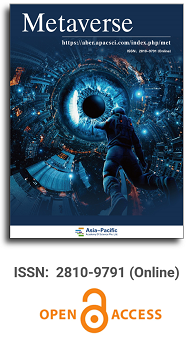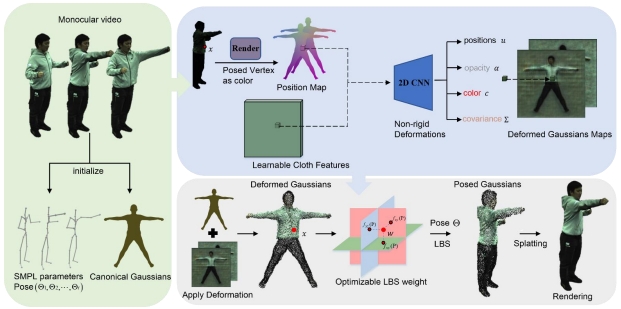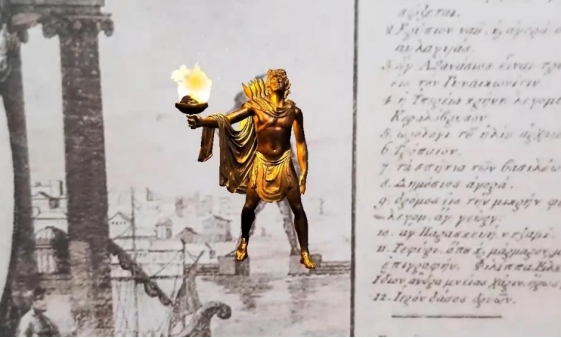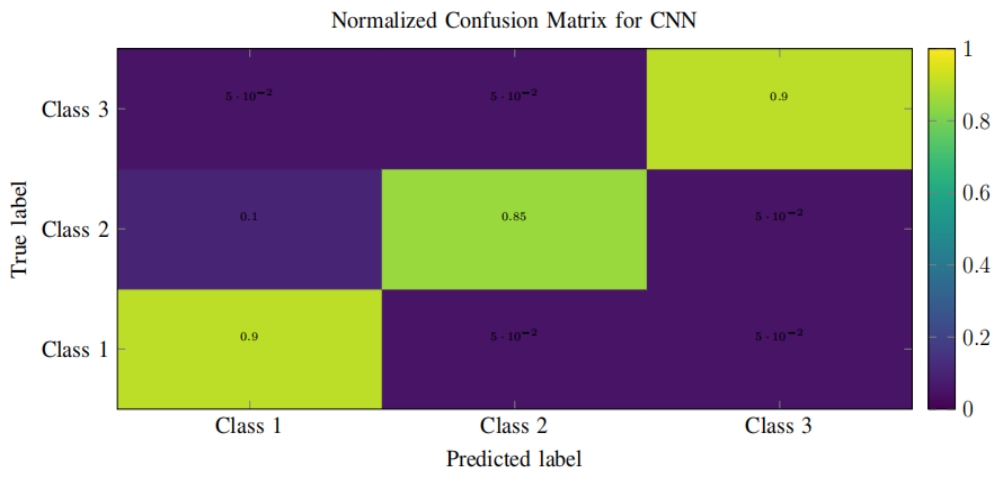
Asia Pacific Academy of Science Pte. Ltd. (APACSCI) specializes in international journal publishing. APACSCI adopts the open access publishing model and provides an important communication bridge for academic groups whose interest fields include engineering, technology, medicine, computer, mathematics, agriculture and forestry, and environment.



The (virtual) battle for intellectual property rights in the metaverse: The case of copyright, trademarks and the NFT technology
Vol 6, Issue 1, 2025
Download PDF
Abstract
This paper examines the evolving challenges of intellectual property (IP) rights protection in the Metaverse, with particular focus on the intersection of traditional IP frameworks with emerging Non-fungible token (NFT) technology. While existing research has explored digital IP rights broadly, the unique characteristics of the Metaverse—its decentralized nature, platform interoperability, and novel ownership models—present unprecedented legal and technical challenges that warrant systematic investigation. The research addresses three key questions: 1) How do traditional territorial-based IP frameworks adapt to the borderless nature of the Metaverse? 2) What specific challenges does NFT technology present for trademark and copyright protection? 3) How can existing legal mechanisms be enhanced to provide effective IP protection in virtual environments? Through comparative analysis of recent case law from American and European courts, supported by examination of regulatory frameworks and technological capabilities, this study identifies critical gaps in current IP protection mechanisms. The analysis reveals that while NFTs offer new possibilities for digital rights management, their implementation raises complex issues regarding ownership verification, cross-platform rights enforcement, and jurisdictional authority. The paper proposes a three-tier framework for enhancing IP protection in the Metaverse: 1) Technical solutions incorporating blockchain-based verification systems with practical implementation considerations; 2) legal adaptations to address jurisdictional challenges; and 3) platform-level governance mechanisms. Each tier is evaluated against current technological constraints and legal precedents to ensure practical viability. This research contributes to both academic discourse and practical policy development by providing a structured analysis of Metaverse IP challenges and offering implementable solutions that balance innovation with rights protection. The findings suggest that effective IP protection in the Metaverse requires a hybrid approach combining adapted legal frameworks, technological solutions, and platform cooperation.
Keywords
References
- Vallas S, Schor JB. What do platforms do? Understanding the gig economy. Annual Review of Sociology. 2020; 46: 273–294. doi: 10.1146/annurev-soc-121919-054857
- Sutherland W, Jarrahi MH. The sharing economy and digital platforms: A review and research agenda. International Journal of Information Management. 2018; 43: 328–341. doi: 10.1016/j.ijinfomgt.2018.07.004.
- Bertolini A, Episcopo F, Cherciu NA. Liability of online platforms. 2021. Available online: https://www.europarl.europa.eu/RegData/etudes/STUD/2021/656318/EPRS_STU(2021)656318_EN.pdf (accessed on 12 May 2024).
- Bertolini A, Sposini L. Digital Platforms and Liability in Bertolini (ed), Regulating Advanced Technologies: Policy Papers on the Jean Monnet Centre of Excellence on the Regulation of Robotics and AI. Il Campano. 2022; 22–38. Available online: https://www.iris.sssup.it/retrieve/831dc622-ae91-46e3-ac06-2a55c2035fec/EURAPolicyPapers.pdf (accessed on 12 May 2024).
- EY, LUISS. Web 3.0: Metaverso e NFT. 2023. Available online: https://www.ey.com/it_it/newsroom/2023/02/web-3-0-prossimi-10-anni-previsto-un-tasso-di-crescita-dei-ricavi-superiore-del-40-per-cento (accessed on 15 May 2024).
- Suh A, Prophet J. The state of immersive technology research: A literature analysis. Computers in Human Behavior. 2018; 86: 77–90.
- Blyth C. Immersive technologies and language learning. Foreign Language Annals. 2018; 51: 225–232.
- Handa M, Aul G, Bajaj S. Immersive technology–uses, challenges and opportunities. International Journal of Computing & Business Research. 2012; 6: 1–11. ISSN (Online): 2229-6166.
- Lee SG, Trimi S, Byun W, Kang M. Innovation and imitation effects in Metaverse service adoption. Service Business. 2011; 5: 155–172. doi: 10.1007/s11628-011-0108-8
- Schroeder R, Huxor A, Hudson-Smith A. Activeworlds: Geography and social interaction in virtual reality. Futures. 2001; 33: 569–587.
- Jaynes C, Seales WB, Calvert KC, et al. The Metaverse: A networked collection of inexpensive, self-configuring, immersive environments. Proceedings of the workshop on Virtual environments. 2003; 115–124. doi: 10.1145/769953.769967
- Rymaszewski M, Au WJ, Wallace M, et al. Second Life: The Official Guide. Wiley; 2007.
- Owens D, Mitchell A, Khazanchi D, Zigurs I. An empirical investigation of virtual world projects and metaverse technology capabilities. SIGMIS Database. 2011; 42: 74–101. doi.org/10.1145/1952712.1952717
- Zackery A, Shariatpanahi P, Zolfagharzadeh MM, Pourezzat AA. Toward a simulated replica of futures: Classification and possible trajectories of simulation in futures studies. Futures. 2016; 81: 40–53. doi: 10.1016/j.futures.2015.11.002
- Cameron A. Splendid isolation: ‘Philosopher’s islands’ and the reimagination of space. Geoforum. 2012; 43(4): 741-749. doi: 10.1016/j.geoforum.2011.12.008
- Ball M. The Metaverse: And How It Will Revolutionize Everything. Liveright Pub Corp. 2022; 29.
- Council of European Union. Analysis and Research Team (ART), Metaverse—Virtual World, Real Challenges. March 2022; 3. Available online: https://www.consilium.europa.eu/media/54987/metaverse-paper-9-march-2022.pdf (accessed on 15 May 2024).
- Kovacova M, Horak J, Higgins M. Behavioral analytics, immersive technologies, and machine vision algorithms in the Web3-powered Metaverse world. Linguistic and Philosophical Investigations. 2022; 21: 57–72. doi: 10.22381/lpi2120224
- Voshmgir S. Token Economy: How the Web3 reinvents the internet. Token Kitchen. 2020; 2.
- Lee LH, Braud T, Zhou P, et al. All one needs to know about metaverse: A complete survey on technological singularity, virtual ecosystem, and research agenda. arXiv preprint arXiv:211005352. 2021.
- Belk R. Mariam Humayun and Myriam Brouard, Money, possessions, and ownership in the Metaverse: NFTs, cryptocurrencies, Web3 and Wild Markets. Journal of Business Research. 2022; 153: 198–205. doi: 10.1016/j.jbusres.2022.08.031
- Park A, Wilson M, Robson K, et al. Interoperability: Our exciting and terrifying Web3 future. Business Horizons. 2023; 66(4): 529-541. doi: 10.1016/j.bushor.2022.10.005
- Kanematsu H, Ogawa N, Shimizu A. Skype Discussion for PBL Between Two Laboratories and Students Biological/Psychological Responses. Procedia Computer Science. 2017; 112: 1730–1736. doi: 10.1016/j.procs.2017.08.200
- Kantaros A, Piromalis D, Tsaramirsis G, et al. 3D printing and implementation of digital twins: Current trends and limitations. Applied System Innovation. 2021; 5(7). doi: 10.3390/asi5010007
- Wang Y, Su Zhou, Zhang N, et al. A survey on metaverse: Fundamentals, security, and privacy. IEEE Communications Surveys & Tutorials 2022; 319–352. doi: 10.1109/COMST.2022.3202047
- Lyytinen K, Yoo Y. Ubiquitous computing Communications of the ACM. 2002; 45: 63–96. doi: 10.1145/585597.58561.
- Friedewald M, Raabe O. Ubiquitous computing: An overview of technology impact. Telematics and Informatics. 2011; 28: 55–65. doi: 10.1016/j.tele.2010.09.001
- Krumm J. Ubiquitous computing fundamentals. CRC Press; 2018.
- Olshavsky RW. Time and the Rate of Adoption of Innovations. Journal of Consumer Research. 1980; 6(4): 425-428. doi: 10.1086/208786
- Wu J, Lin K, Lin D, et al. Financial Crimes in Web3-empowered Metaverse: Taxonomy, Countermeasures, and Opportunities. IEEE Open Journal of the Computer Society. 2023; 4: 37–49. doi: 10.48550/arXiv.2212.13452
- Laviola F, Iannuzzi A. Fundamental rights in the digital transformation between freedom and equality (Italian). Constitutional Law. 2023; 9–40.
- Di Majo L. Art. 2 of the Constitution and the “Metaverse” (Italian). MEDIA LAWS. 2023. Available online: https://www.medialaws.eu/wp-content/uploads/2023/06/1-23-Di-Majo.pdf (accessed on 15 May 2024).
- Rossi M, Ciletti M, Scarinci A, Toto GA. Learning through the metaverse and immersive reality: new inclusive perspectives (Italian). IUL Research. 2023; 4: 164–176. Doi: 10.57568/iulresearch.v4i7.419
- Brittan H. The Problems With Immersive Advertising: In AR/VR, Nobody Knows You’re An Ad. Standford Journal of Online Trust and Safety. 2021; 1: 1–14. doi: 10.54501/jots.v1i1.21
- Choi Y, Kim YS. A study on satisfaction with virtual object manipulation in metaverse based on mixed reality. Journal of Positive School Psychology. 2022; 10282. Available online: https://www.journalppw.com/index.php/jpsp/article/view/6353 (accessed on 15 June 2024).
- De Haas E, Huang Y, Bermejo C, et al. Towards Trustworthy Augmented Reality in The Metaverse Era: Probing Manipulative Designs in Virtual-Physical Commercial Platforms. IEEE. 2023. doi: 10.1109/VRW58643.2023.00232
- Christodoulou K, Katelaris L, Themistocleous M, et al. NFTs and the metaverse revolution: Research perspectives and open challenges. Blockchains and the Token Economy: Theory and Practice. 2022; 139–178. doi: 10.1007/978-3-030-95108-5_6
- Turdialiev MA. The legal issues of metaverse and perspectives of establishment of international financial center in metaverse. Oriental renaissance: Innovative, educational, natural and social sciences. 2022; 2: 239–249. Available online: https://dergipark.org.tr/en/pub/ljr/issue/82725/1419936 (accessed on 15 June 2024).
- Ramos A. The metaverse, NFTS and IP rights: To regulate or not to regulate? Intellectual Property Forum: Journal of the Intellectual and Industrial Property Society of Australia and New Zealand. 2022. Available online: https://www.wipo.int/en/web/wipo-magazine/articles/the-metaverse-nfts-and-ip-rights-to-regulate-or-not-to-regulate-42603 (accessed on latest access: 15 June 2024).
- Dwivedi YK, Hughes H, Wang Y. Metaverse marketing: How the metaverse will shape the future of consumer research and practice. Psychology & Marketing. 2023;40: 750–776.
- Di Pierro M. What is the blockchain? Computing in Science & Engineering. 2017; 19: 92. doi: 10.1109/MCSE.2017.3421554
- Porru S, Pinna A, Marchesi M, Tonelli R. Blockchain-oriented software engineering: Challenges and new directions. IEEE. 2017; 169. doi: 10.48550/arXiv.1702.05146
- Serras C, Alturas B, Lapa T. Metaverse Technological Adoption: A Study of Processes, Behaviors and Attitudes. Metaverse Driven Intelligent Information Systems. 2024. doi: 10.1007/978-3-031-72418-3_17
- Rajasekaran AS, Azees M, Al-Turjman F. A comprehensive survey on blockchain technology. Sustainable Energy Technologies and Assessments. 2022; 52(02039). doi: 10.1016/j.seta.2022.102039
- Michael J, Cohn A, Butcher JR. Blockchain technology. 5th Texila World Conference for Scholars (TWCS). 2018; 1: 1-11. doi: 10.21522/TIJAR.2014.SE.19.02.Art003.
- Yaga D, Mell P, Roby N, Scarfone K. Blockchain technology overview. arXiv preprint arXiv:190611078. 2019. doi: 10.48550/arXiv.1906.11078
- Golosova J, Romanovs A. The advantages and disadvantages of the blockchain technology. IEEE. 2018. Available online: https://ieeexplore.ieee.org/document/8592253 (accessed on 15 May 2024).
- Ammous S. Blockchain technology: What is it good for? Available at SSRN 2832751. 2016.
- WIPO. Blockchain technologies and IP ecosystems: A WIPO white paper. 2022; 23. Available online: https://www.wipo.int/export/sites/www/cws/en/pdf/blockchain-for-ip-ecosystem-whitepaper.pdf (accessed on 15 May 2024).
- European Blockchain Observatory and Forum. Demystifying Non-Fungible Tokens (NFTs). 2020. 4. Available online: https://blockchain-observatory.ec.europa.eu/document/download/3494c6fc-c61d-4193-b24a-28da803fc5fe_en?filename=DemystifyingNFTs_November+2021_2.pdf (accessed on 15 May 2024).
- Bamakan H, Nezhadsistani N, Bodaghi O, Qu Q. Patents and intellectual property assets as non-fungible tokens; key technologies and challenges. Scientific Reports. 2022; 12: 1–13. doi: 10.1038/s41598-022-05920-6
- Savelyev A. Copyright in the blockchain era: Promises and challenges. Computer law & security review. 2018; 34: 550–561.
- Muciaccia N, Lopopolo S. First reflections on the relationship between NFT and IP (Italian). Journal Horizons of Commercial Law. 2022; 1–57.
- Vulpiani G. Non fungible tokens, smart contracts and blockchain in art and fashion: crypto art and digital fashion (Italian). Cammino Diritto. 2021; 2.
- Wang Q, Li R, Chen S. Non-fungible token (NFT): Overview, evaluation, opportunities and challenges. arXiv preprint arXiv:210507447. 2021.
- Park A, Kietzmann J, Pitt L, Dabirian A. The evolution of nonfungible tokens: Complexity and novelty of NFT use-cases. IT Professional. 2022; 24: 9. doi: 10.1109/MITP.2021.3136055
- European Innovation Council and SMEs Executive Agency. Intellectual Property in the Metaverse. Episode 1. 2022. Available online: https://intellectual-property-helpdesk.ec.europa.eu/news-events/news/intellectual-property-metaverse-episode-1-2022-02-25_en (accessed on 15 May 2024).
- US District Court for the Southern District of New York. Nike Inc. v. StockX LLC, Case No. 22-cv-983. 2022. Available online: https://heitnerlegal.com/wp-content/uploads/Nike-v-StockX.pdf (accessed on 15 June 2024).
- Howard M, Kahn J. Hermés International v. Mason Rothschild, 1:22-cv-00384. SDNY. Loeb&Loeab LLP. Available online: https://www.loeb.com/en/insights/publications/2023/06/hermes-international-v-rothschild (accessed on 14 May 2024).
- Rogers v. Grimaldi, 875 F.2d 994, 999, 2d Cir. 1989. Available online: https://law.justia.com/cases/federal/district-courts/FSupp/695/112/2345732/ (accessed on 15 May 2024).
- Goldbard LG, Binni NS. The First Amendment: Apparent Immunity from Trademark Infringement? Available online: https://www.stroock.com/uploads/firstamendmentapparentimmunityfromtrademarkinfringement.pdf (accessed on 15 May 2024).
- Nice Classification, 11th Edition. 2022. Available online: https://www.wipo.int/classifications/nice/nclpub/en/fr/?basic_numbers=show&class_number=9&explanatory_notes=show&gors=&lang=en&menulang=en&mode=flat¬ion=&pagination=no&version=20220101 (accessed on 15 May 2024).
- EUIPO. Virtual goods, non-fungible tokens and the metaverse. 2022. Available online: https://euipo.europa.eu/ohimportal/en/news-newsflash/-/asset_publisher/JLOyNNwVxGDF/content/pt-virtual-goods-non-fungible-tokens-and-the-metaverse (accessed on 15 May 2024).
- EUIPO. Refusal of application for a European Union trademark (Article 7 and Article 42(2) EUTMR), application No. 018647205. Available online: https://www.google.com/url?sa=t&rct=j&q=&esrc=s&source=web&cd=&cad=rja&uact=8&ved=2ahUKEwib8YXWrJX-AhWhR_EDHU0SAUsQFnoECBgQAQ&url=https%3A%2F%2Feuipo.europa.eu%2Fcopla%2Ftrademark%2Fdata%2F01864720%2Fdownload%2FCLW%2FRFS%2F2023%2FEN%2F20230208_018647205.pdf%3Fapp%3Desearch%26casenum%3D018647205%26trTypeDoc%3DNA&usg=AOvVaw2lzTu5b5-Sbg1UTNYge88G (accessed on 15 May 2024).
- Müller F. Remembering in the metaverse: Preservation, evaluation, and perception. University of Basel. 2012. Available online: https://edoc.unibas.ch/16452/1/diss_mueller_pdfa_final.pdf (accessed on 15 May 2024).
- Hackl C. How brands can thrive in the direct to avatar economy. 2022. Available online: https://www.forbes.com/sites/cathyhackl/2021/01/29/how-brands-can-thrive-in-the-direct-to-avatar-economy/?sh=55434c50417c (accessed on 14 May 2024).
- Floridi L. Metaverse: A matter of experience. Philosophy & Technology. 2022; 35(73). doi: 10.2139/ssrn.4121411.
- Falk TH, Le LB, Morandotti R. The Internet of Senses: A Position Paper on the Challenges and Opportunities of Multisensory Immersive Experiences for the Metaverse. IEEE. 2022; 139–144. doi: 10.1109/MetroXRAINE54828.2022.9967586
- Mariusz M. Study—Metaverse. 2023; 119. Available online: https://www.europarl.europa.eu/RegData/etudes/STUD/2023/751222/IPOL_STU(2023)751222_EN.pdf (accessed on 15 May 2024).
- European Commission. Communication from the Commission to the European Parliament, the Council, The European Economic and Social Committee and the Committee of the Regions, on Europe’s Media in the Digital Decade: An Action Plan to Support Recovery and Transformation. 2020. 784 final. Available online: https://eur-lex.europa.eu/legal-content/EN/TXT/?uri=CELEX%3A52020DC0784 (accessed on 15 May 2024).
- European Parliament. Hearing on Regulatory Challenges of the Metaverse. 2023. Available online: https://www.europarl.europa.eu/committees/en/hearing-on-regulatory-challenges-of-the-/product-details/20230420CHE11607 (accessed on 15 May 2024).
- European Parliament. Initiative on virtual worlds, such as the metaverse. Available online: The opinion is available here: https://www.eesc.europa.eu/en/our-work/opinions-information-reports/opinions/initiative-virtual-worlds-such-metaverse (accessed on 15 May 2024).
- Bently L, Sherman B. Intellectual Property Law. Oxford University Press; 2022.
- Pila J, Torremans P. European Intellectual Property Law. Oxford University Press; 2019.
- Grosse H, Metzger, A. Intellectual Property Ordering beyond Borders. Cambridge Intellectual Property and Information Law, Cambridge University Press; 2022.
- Vanzetti A, Di Cataldo V, Spolidoro MS. Handbook of Industrial Law (original language: Italian). 9 edn. Giuffrè. 2021; 173.
- INTA. White Paper Trademarks in the Metaverse. 2023; 26. Available online: https://www.inta.org/perspectives/inta-research/trademarks-in-the-metaverse-white-paper/ (accessed on 15 May 2024).
- Weiser PJ. Regulating Interoperability: Lessons from AT&T, Microsoft, and Beyond. Antitrust LJ. 2009; 76: 271. Available online: https://scholar.law.colorado.edu/faculty-articles/454 (accessed on 15 May 2024).
- Wertheimer HW. The principle of territoriality in the trademark law of the common market countries. International & Comparative Law Quarterly. 1967; 16: 630–662. Available online: https://www.cambridge.org/core/journals/international-and-comparative-law-quarterly/article/abs/principle-of-territoriality-in-the-trademark-law-of-the-common-market-countries/F281B0C8535284F2C651D1559E80CCE6#article (accessed on 15 May 2024).
- Peukert A. Territoriality and extra-territoriality in intellectual property law, Beyond Territoriality. Brill Nijhoff. 2012; 189-228.
- Dinwoodie GB. Trademarks and territory: Detaching trademark law from the nation-state. Hous L Rev. 2004; 41: 885.
- Kenney M, Bearson D, Zysman J. The Platform Economy Matures: Pervasive Power, Private Regulation, and Dependent Entrepreneurs. SSRN Electronic Journal. 2019. 47. doi: 10.2139/ssrn.3497974
- Correani A, De Massis A, Frattini F, et al. Implementing a digital strategy: Learning from the experience of three digital transformation projects. California management review. 2020; 62; 37–56.
- INTA. White Paper Trademarks in the Metaverse. 2020; 23. Available online: https://www.inta.org/wp-content/uploads/public-files/perspectives/industry-research/METAVERSE_REPORT-070323.pdf (accessed on 15 May 2024).
- Dick E. Public policy for the metaverse: Key takeaways from the 2021 AR/VR policy conference. 2021. Available online: https://d1bcsfjk95uj19.cloudfront.net/sites/default/files/2021-arvr-policy-conference-report.pdf (accessed on 15 May 2024).
- Dionisio JDN, Burns III WG, Gilbert R. 3D Virtual worlds and the metaverse: Current status and future possibilities. ACM Comput Surv. 2013; 45.
- Bosworth A, Clegg N. Building the metaverse responsibly. Meta. 2021; 27: 2. Available online: https://about.fb.com/news/2021/09/building-the-metaverse-responsibly/ (accessed on 15 May 2024).
- Balis J. How brands can enter the metaverse. HBR Online. 2022; 1–6. Available online: https://hbr.org/2022/01/how-brands-can-enter-the-metaverse (accessed on 15 May 2024).
Supporting Agencies
Copyright (c) 2025 Author(s)
License URL: https://creativecommons.org/licenses/by/4.0/

This site is licensed under a Creative Commons Attribution 4.0 International License (CC BY 4.0).

Prof. Zhigeng Pan
Director, Institute for Metaverse, Nanjing University of Information Science & Technology, China

Prof. Jianrong Tan
Academician, Chinese Academy of Engineering, China
Conference Time
December 15-18, 2025
Conference Venue
Hong Kong Convention and Exhibition Center (HKCEC)
...
Metaverse Scientist Forum No.3 was successfully held on April 22, 2025, from 19:00 to 20:30 (Beijing Time)...
We received the Scopus notification on April 19th, confirming that the journal has been successfully indexed by Scopus...
We are pleased to announce that we have updated the requirements for manuscript figures in the submission guidelines. Manuscripts submitted after April 15, 2025 are required to strictly adhere to the change. These updates are aimed at ensuring the highest quality of visual content in our publications and enhancing the overall readability and impact of your research. For more details, please find it in sumissions...






.jpg)
.jpg)

